The Utility Arborist Association’s outgoing president, Geoff Kempter has been with the association for more than 30 years. In 2018, at the encouragement of former President John Goodfellow and retired Executive Director Phil Charlton, he pursued a position of leadership with the organization.
Geoff is a Technical Services Manager for Asplundh, consultant and author of books on best practices in UA. We caught up with him in this recent conversation…
Your term as UAA president is about to end. What has the past year been like for you?
My leadership term allowed me the opportunity to meet so many wonderful people, lead substantive industry discussions, hear a lot of great ideas and witness first-hand the deep level of engagement so many have in the UAA. We are part of an organization that cares about what it’s doing and its mission. It’s incredibly exciting and gratifying to work with such dedicated people.
I was fortunate to be part of the process that brought in our new Executive Director Dennis Fallon to run the UAA. The organization has grown tremendously over the years and our vision is to continue increasing the capacity to move it forward. I’m incredibly proud of people like Dennis and our terrific staff, including Operations Manager Diona Neeser, Marketing Outreach Manager Susan Roberts and Communications Member Services Manager Renee Phillips.
What are you most proud of during your leadership?
We’ve been very successful in highlighting the importance of environmental stewardship. As utility arborists, we take care of valuable resources that provide huge benefits. We manage vegetation and habitat, and that provides eco-friendly resources for everyone.
We’ve made a good start calling attention to the value of our work but we need to continue to push that. Our industry is not as well-understood as it should be. It’s not a commodity service. We put people in close proximity to high voltage power lines using complex heavy equipment or the physical skills involved in climbing trees. UA requires technical skills, professional expertise and the knowledge to cut the right branches and remove the right trees. It’s important for everyone – especially those who make financial and regulatory decisions – to recognize our value.
What do you think the UAA does well as an organization?
The UAA provides members with opportunities for education and networking, especially learning from peers and understanding what they are doing in the field. UAA does a great job of connecting members at the annual Trees & Utilities conference, Safety Summits, and regional events that are within driving distance so that people can become involved and stay involved.
Some professional organizations charge members a lot of money to join, but we keep our dues relatively low. We have great sponsors to help underwrite the costs of our meetings and membership, and that allows us to reach more people. Some of the best friends in my life are people I met through the UAA. The benefits are both personal and professional growth in addition to the contacts you make.
What are the challenges facing the utility arborist industry right now and in the coming years?
The first issue is finding people to work in our industry when there’s a shortage of workers everywhere. We compete for fit, young people who enjoy the challenge of getting out there into the bush, trees and field. We’re looking for more qualifications than a lot of employers. We need people willing to put themselves out there and take pleasure in being outside doing incredibly physical work and overseeing it.
Climate change is stressing the trees and is increasing the frequency and intensity of storms that affect the power lines, which leads to higher tree failure rates. At the same time, reliable power is more important than ever. People expect it and environmental challenges are making it much more difficult to provide. To meet this challenge, we must ensure that the work we do is focused on prevention, by targeting trees and other vegetation before they cause a problem.
How would you encourage others in leadership positions like yours who are so invested in the industry to get involved in the UAA?
When I was hired at Asplundh, my specialty was municipal arboriculture. I quickly learned that UA was a key part of what my company was doing and anybody who was anybody was in UAA. So, of course I joined, and I haven’t looked back. It’s wonderful for your career. I’m a better manager at Asplundh because of the time I spend with UAA. I bring it all back and apply it to my job. I’ve always been supported by our executive team. It’s well worth taking the time to get involved.
Looking down the road, what’s next for the UAA?
I think we need to look beyond UVM and tree pruning, and consider professional vegetation management at large, including managing for biodiversity and habitat improvement. There are millions of acres of right-of-way in addition to electric utilities. What about the people who work on pipelines, roadsides, railroads, and other vegetation management? Also, prairie restoration and other land reclamation projects? We’re all using the same tools, treatments and skills, equipment and personnel, to be good environmental stewards. There’s room for UAA to meet the needs of all these folks. I can’t imagine any reasons that they would not want to be a part of our organization. UAA has the potential to grow into those markets and engage people that are not aware of what we do.

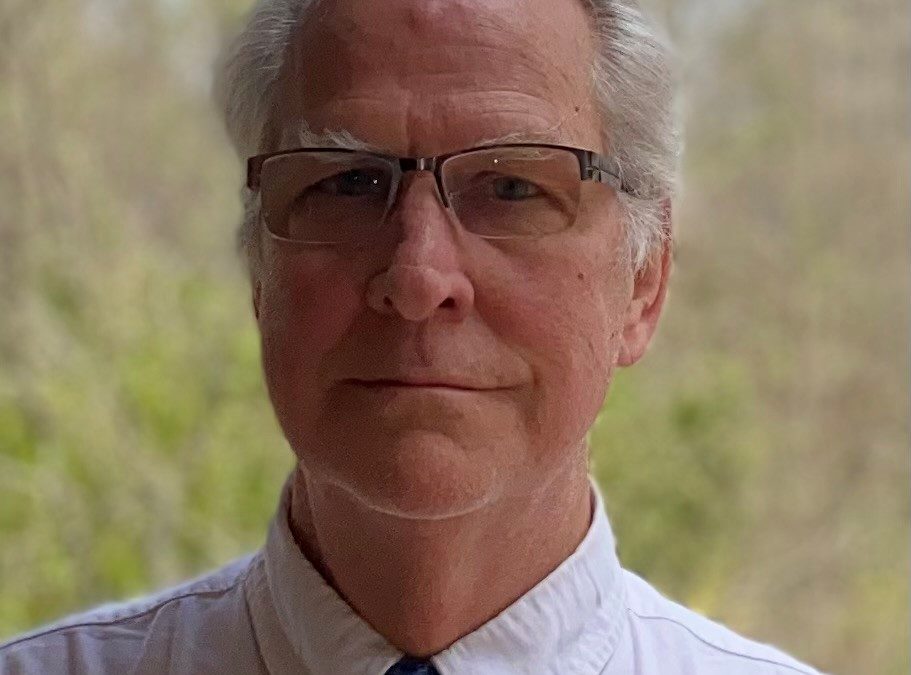
 Craig works for Pacific Gas and Electric as a Principal Program Manager in Land Management. His career spans 30 years in the utility industry serving numerous roles. He is an ISA Certified Arborist, Utility Specialist, and hold his TRAQ and is a TCIA Certified TreeCare Safety Professional. Craig has been engaged and involved in the UAA for many years, starting back in 2008. He then wanted more so he ran for UAA President and was elected in 2014. Today, Craig looks back over his 30-year career and wouldn’t change a thing, he’s made life-long friends and considers many as mentors. He also claims he would not be where is in his career if it weren’t for these people, and pledges to pay it forward to support others in their success.
Craig works for Pacific Gas and Electric as a Principal Program Manager in Land Management. His career spans 30 years in the utility industry serving numerous roles. He is an ISA Certified Arborist, Utility Specialist, and hold his TRAQ and is a TCIA Certified TreeCare Safety Professional. Craig has been engaged and involved in the UAA for many years, starting back in 2008. He then wanted more so he ran for UAA President and was elected in 2014. Today, Craig looks back over his 30-year career and wouldn’t change a thing, he’s made life-long friends and considers many as mentors. He also claims he would not be where is in his career if it weren’t for these people, and pledges to pay it forward to support others in their success.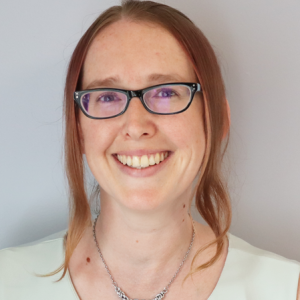 Sam joins the UAA crew with over a decade of non-profit experience behind her. As our Partnership Coordinator, her focused efforts on building relationships with diverse funders include crafting proposals, cultivating connections, and cohesively earning dedicated sponsors to support the sustainability of UAA substantially and empowering our programs. Well equipped with professional skills which include program development, public speaking, proposal writing, donor relations, working with diverse stakeholders, coalition building, and public-facing service. Sam’s educational background includes a BS in Animal Ecology with a minor in Animal Science, and a MA in Philanthropy and Non-profit Development.
Sam joins the UAA crew with over a decade of non-profit experience behind her. As our Partnership Coordinator, her focused efforts on building relationships with diverse funders include crafting proposals, cultivating connections, and cohesively earning dedicated sponsors to support the sustainability of UAA substantially and empowering our programs. Well equipped with professional skills which include program development, public speaking, proposal writing, donor relations, working with diverse stakeholders, coalition building, and public-facing service. Sam’s educational background includes a BS in Animal Ecology with a minor in Animal Science, and a MA in Philanthropy and Non-profit Development. Jodie Braskich is an experienced professional in the utility industry with a strong background in supply chain and vegetation management. With over 18 years of industry expertise, Jodie continues to contribute her time and knowledge to the continuous improvement of the professional field of UVM. She has been a member of the UAA since 2007.
Jodie Braskich is an experienced professional in the utility industry with a strong background in supply chain and vegetation management. With over 18 years of industry expertise, Jodie continues to contribute her time and knowledge to the continuous improvement of the professional field of UVM. She has been a member of the UAA since 2007. Josh Beaver is currently senior vice president of Eocene Environmental Group, a utility vegetation management (UVM) consulting and operations firm. Josh has more than two decades of experience within the UVM industry. He is currently responsible for relationship management and oversight of long-term UVM contracts throughout the United States and Canada. He considers customer and community communication to be vital aspects of his role, and he has a proven record of success working with utilities.
Josh Beaver is currently senior vice president of Eocene Environmental Group, a utility vegetation management (UVM) consulting and operations firm. Josh has more than two decades of experience within the UVM industry. He is currently responsible for relationship management and oversight of long-term UVM contracts throughout the United States and Canada. He considers customer and community communication to be vital aspects of his role, and he has a proven record of success working with utilities.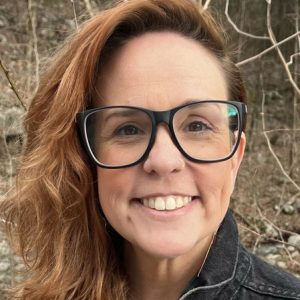 Crystal started her career in the Interior Design space but soon found herself
Crystal started her career in the Interior Design space but soon found herself 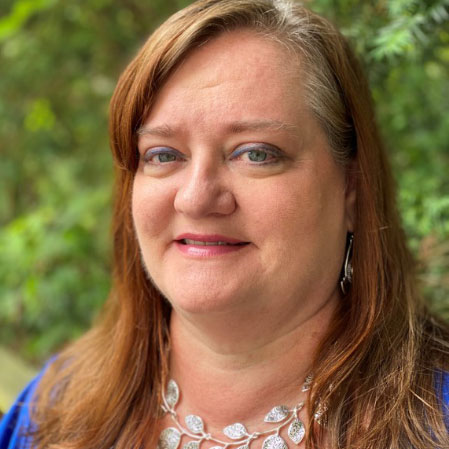 Renée is our Member Services Manager. She is available to UAA members for questions on committee assignments, educational opportunities, scholarships, CEU questions, and any other assistance.
Renée is our Member Services Manager. She is available to UAA members for questions on committee assignments, educational opportunities, scholarships, CEU questions, and any other assistance.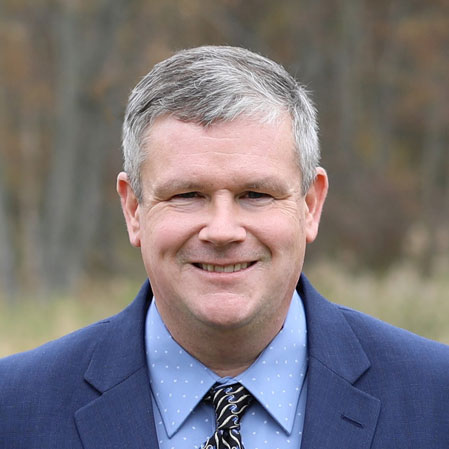
 Jeff has enjoyed a 32-year career in Utility Vegetation Management. He began his career in 1993 with Holy Cross Energy as a temporary groundman. After receiving full time employment in 1994. He worked his way through the department from climber to foreman and eventually department manager in 2018. He brings a real-world approach to the industry.
Jeff has enjoyed a 32-year career in Utility Vegetation Management. He began his career in 1993 with Holy Cross Energy as a temporary groundman. After receiving full time employment in 1994. He worked his way through the department from climber to foreman and eventually department manager in 2018. He brings a real-world approach to the industry. Jason is a seasoned utility vegetation management professional with almost 20 years of experience leading data-driven, field-tested programs that prioritize safety, reliability, and operational efficiency. Jason is a forward-thinking leader who integrates emerging technologies to extract insights from complex data, streamline workflows, and drive smarter decision-making across the organization.
Jason is a seasoned utility vegetation management professional with almost 20 years of experience leading data-driven, field-tested programs that prioritize safety, reliability, and operational efficiency. Jason is a forward-thinking leader who integrates emerging technologies to extract insights from complex data, streamline workflows, and drive smarter decision-making across the organization.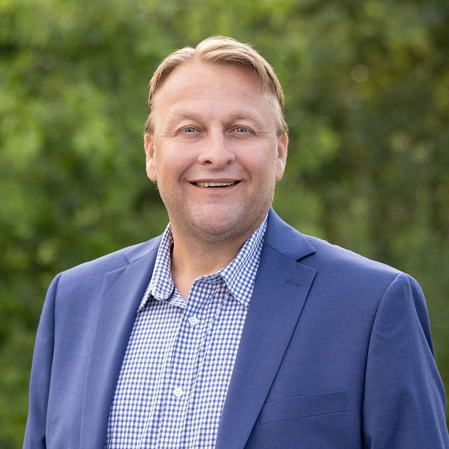 C. Troy Ross is the president of vegetation management at ACRT and ACRT Pacific. Shortly after graduating from Hocking College with a degree in Ranger Services and Fish and Wildlife, Ross began his career with ACRT at Southwest Tennessee Electric Membership Corporation as a contract utility forester in 1999. Since then, he has advanced through increasingly senior leadership roles, supporting vegetation management programs for a wide range of utility types and organizational structures.
C. Troy Ross is the president of vegetation management at ACRT and ACRT Pacific. Shortly after graduating from Hocking College with a degree in Ranger Services and Fish and Wildlife, Ross began his career with ACRT at Southwest Tennessee Electric Membership Corporation as a contract utility forester in 1999. Since then, he has advanced through increasingly senior leadership roles, supporting vegetation management programs for a wide range of utility types and organizational structures. A winner of the David H Nabi Award for dedication and service, Dr. Robert Vanderhoof earned his Ph.D. from the College of Forest Resources at Mississippi State University in 1995. A veteran natural resource manager, Robert spent 15 years as Florida’s Deer Management Section Chief during which time he coordinated range management activities across Florida’s seven-million-acre wildlife management area system.
A winner of the David H Nabi Award for dedication and service, Dr. Robert Vanderhoof earned his Ph.D. from the College of Forest Resources at Mississippi State University in 1995. A veteran natural resource manager, Robert spent 15 years as Florida’s Deer Management Section Chief during which time he coordinated range management activities across Florida’s seven-million-acre wildlife management area system. Cindy is the Senior Director, Vegetation Management Services and she manages departments responsible for maintaining vegetation in REC’s rights-of-way with the goal of reducing exposure of the electric grid to tree caused outages while encouraging habitat and species diversity. Cindy also has a consulting business, EcoAcumen, LLC that focuses on residential, commercial and government clients.
Cindy is the Senior Director, Vegetation Management Services and she manages departments responsible for maintaining vegetation in REC’s rights-of-way with the goal of reducing exposure of the electric grid to tree caused outages while encouraging habitat and species diversity. Cindy also has a consulting business, EcoAcumen, LLC that focuses on residential, commercial and government clients.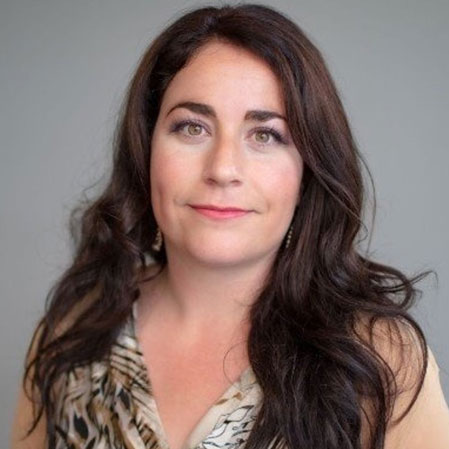 Kimberly Laing has had an exciting career in the energy industry, gaining valuable experience in various areas for almost 20 years. During her career, she has worked with numerous customers worldwide in a diverse cross-disciplined technical environment. She has extensive experience working with utilities, asset owners, equipment manufacturers, and consultants to facilitate transmission and distribution projects. Kimberly is particularly passionate about Utility Vegetation Management and its vital role in delivering safe and reliable power.
Kimberly Laing has had an exciting career in the energy industry, gaining valuable experience in various areas for almost 20 years. During her career, she has worked with numerous customers worldwide in a diverse cross-disciplined technical environment. She has extensive experience working with utilities, asset owners, equipment manufacturers, and consultants to facilitate transmission and distribution projects. Kimberly is particularly passionate about Utility Vegetation Management and its vital role in delivering safe and reliable power. Fallon is a Utility Arborist and Executive Director of the Utility Arborist Association. Prior to his current role he was responsible for leading vegetation management programs across several upper Midwest states on behalf of a large investor-owned utility. He’s also been an adjunct professor at the University of Wisconsin-Stevens Point, where he facilitated the
Fallon is a Utility Arborist and Executive Director of the Utility Arborist Association. Prior to his current role he was responsible for leading vegetation management programs across several upper Midwest states on behalf of a large investor-owned utility. He’s also been an adjunct professor at the University of Wisconsin-Stevens Point, where he facilitated the 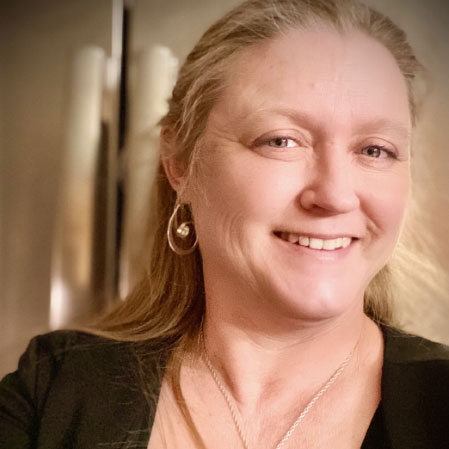 Erin Creekmur has been in the UVM industry for over 20 years. After graduating with a Bachelors in Botany from Northern Arizona University she relocated to Northern California to start her professional career. Starting as a consulting utility pre-inspector with Western ECI she quickly moving up to the ranks to Supervisor under the tutelage of folks like Nelson Money. In 2004, Erin joined PG&E as a Quality Assurance Auditor for the VM program. Eventually becoming the Program Manager for the North Coast Division, helping stand up the beginnings of CEMA as the Emergency Drought Response Initiative Lead for the Enhanced Inspection & Mitigation Program, targeting off-cycle hazard trees across the system. In 2015, Erin moved back to her home state of Arizona and took the role of Division Supervisor with Arizona Public Service, managing both transmission and distribution UVM programs out of the Flagstaff area. As part of her role with APS Forestry Fire and Resource Management Department, Erin had responsibility for creating a Hazard Tree Mitigation program. maintaining APS’s ROW Stewardship Accreditation, FERC reporting, and the Transmission Lidar program. In 2021, Erin took a shift in her career and is now Supervising the Customer Construction and Design team for APS, expanding her overall understanding of the Utility industry. Erin continues to maintain her ISA Utility Specialist Certification and TRAQ. She has also completed certifications in both Six Sigma and Lean Sigma Green Belt through accredited universities. In addition to her current service on the UAA Board of Directors, Erin spent the last 6 years as an officer with the Arboretum at Flagstaff Board of Directors. In her free time, you can find Erin in the woods taking pictures of native plants and beautiful western landscapes.
Erin Creekmur has been in the UVM industry for over 20 years. After graduating with a Bachelors in Botany from Northern Arizona University she relocated to Northern California to start her professional career. Starting as a consulting utility pre-inspector with Western ECI she quickly moving up to the ranks to Supervisor under the tutelage of folks like Nelson Money. In 2004, Erin joined PG&E as a Quality Assurance Auditor for the VM program. Eventually becoming the Program Manager for the North Coast Division, helping stand up the beginnings of CEMA as the Emergency Drought Response Initiative Lead for the Enhanced Inspection & Mitigation Program, targeting off-cycle hazard trees across the system. In 2015, Erin moved back to her home state of Arizona and took the role of Division Supervisor with Arizona Public Service, managing both transmission and distribution UVM programs out of the Flagstaff area. As part of her role with APS Forestry Fire and Resource Management Department, Erin had responsibility for creating a Hazard Tree Mitigation program. maintaining APS’s ROW Stewardship Accreditation, FERC reporting, and the Transmission Lidar program. In 2021, Erin took a shift in her career and is now Supervising the Customer Construction and Design team for APS, expanding her overall understanding of the Utility industry. Erin continues to maintain her ISA Utility Specialist Certification and TRAQ. She has also completed certifications in both Six Sigma and Lean Sigma Green Belt through accredited universities. In addition to her current service on the UAA Board of Directors, Erin spent the last 6 years as an officer with the Arboretum at Flagstaff Board of Directors. In her free time, you can find Erin in the woods taking pictures of native plants and beautiful western landscapes.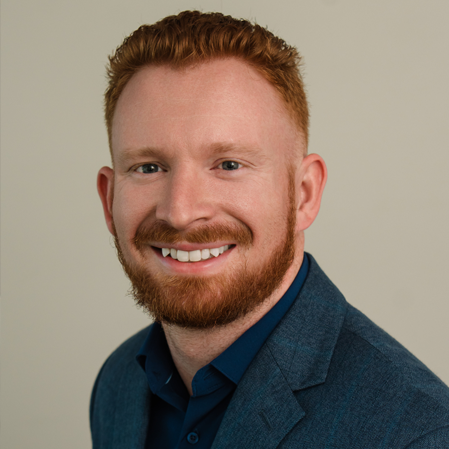 Christopher King serves as Director of Operations at ArborMetrics Solutions (AMS), based in North Carolina. In this capacity, he is responsible for overseeing operational activities across multiple accounts throughout the Eastern United States. With more than a decade of experience in the utility vegetation management (UVM) industry, Mr. King has held a diverse range of roles, including Groundperson, Foreperson, Contract Forester, Vegetation Management Program Manager, Business Development Manager, and Director of Operations Support.
Christopher King serves as Director of Operations at ArborMetrics Solutions (AMS), based in North Carolina. In this capacity, he is responsible for overseeing operational activities across multiple accounts throughout the Eastern United States. With more than a decade of experience in the utility vegetation management (UVM) industry, Mr. King has held a diverse range of roles, including Groundperson, Foreperson, Contract Forester, Vegetation Management Program Manager, Business Development Manager, and Director of Operations Support.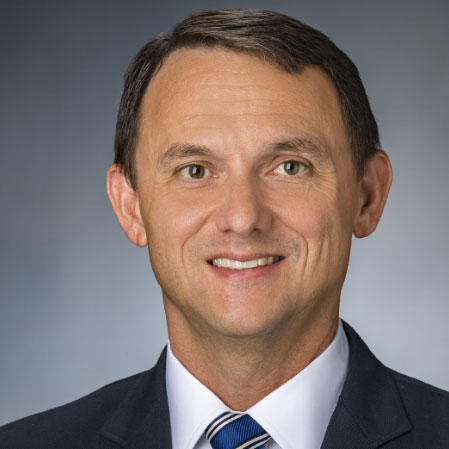 Matt Goff is a Transmission Vegetation Manager at Georgia Power Company. He lives in Brookhaven, GA with his wife, two daughters, and the family’s two dogs Sam, and Payton. For leisure, he enjoys sports with his family, bird hunting, and salt-water fishing.Matt holds a BSFR from the University of Georgia in Forest Resource Management and he graduated in 1997. He has worked in the vegetation management industry for 26 years. His work experience includes six years as a procurement forester for a forest products manufacturer, and 20 years in the utility vegetation management industry with Georgia Power.
Matt Goff is a Transmission Vegetation Manager at Georgia Power Company. He lives in Brookhaven, GA with his wife, two daughters, and the family’s two dogs Sam, and Payton. For leisure, he enjoys sports with his family, bird hunting, and salt-water fishing.Matt holds a BSFR from the University of Georgia in Forest Resource Management and he graduated in 1997. He has worked in the vegetation management industry for 26 years. His work experience includes six years as a procurement forester for a forest products manufacturer, and 20 years in the utility vegetation management industry with Georgia Power. Cody is the Membership Office Coordinator for the Utility Arborist Association, where she supports membership operations with a focus on organization and engagement. She blends her experience in organizing systems, interpreting data, and working closely with people to support both the day-to-day and big-picture needs of the UAA.
Cody is the Membership Office Coordinator for the Utility Arborist Association, where she supports membership operations with a focus on organization and engagement. She blends her experience in organizing systems, interpreting data, and working closely with people to support both the day-to-day and big-picture needs of the UAA.